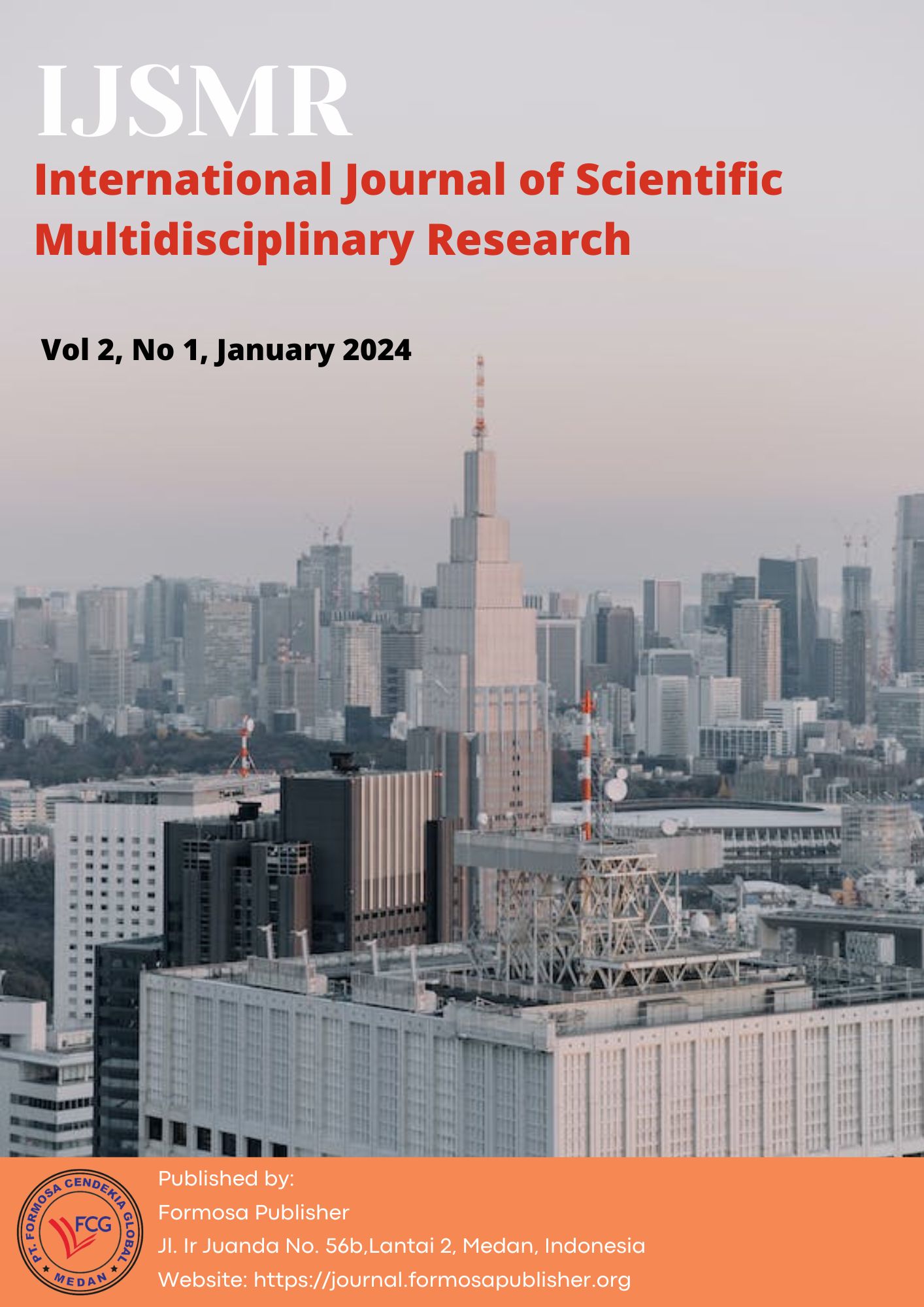Exploring Factors Influencing MOOC Adoption in Afghanistan's Educational Landscape
DOI:
https://doi.org/10.55927/ijsmr.v2i1.8020Keywords:
Massive Open Online Courses (MOOCs), Technological Infrastructure, Awareness, Familiarity, Socio-economic Factors, Institutional SupportAbstract
This research investigates the determinants influencing the adoption of Massive Open Online Courses (MOOCs) within the educational landscape of Afghanistan. The study aims to fill a critical gap in the literature by comprehensively exploring the factors shaping MOOC adoption in this specific context. Employing a sample of 133 participants from Kabul University, Balkh University, Samangan University, and Badakhshan University, the study employs a multiple linear regression analysis to assess the impact of technological infrastructure availability, awareness and familiarity with MOOCs, socio-economic factors, and institutional support and government policies on MOOC adoption. The findings reveal a significant positive correlation between technological infrastructure availability and MOOC adoption, emphasizing the pivotal role of robust technological resources. Additionally, heightened awareness and familiarity with MOOCs positively influence adoption, supporting the importance of targeted awareness campaigns. Socio-economic factors, including income levels and urbanization, are identified as influential in shaping MOOC adoption trends. Furthermore, a positive institutional environment and supportive government policies emerge as critical factors facilitating successful MOOC integration
Downloads
References
Alraimi, K. M., Zo, H., & Ciganek, A. P. (2015). Understanding the MOOCs continuance: The role of openness and reputation. Computers & Education, 80, 28-38. https://doi.org/10.1016/j.compedu.2014.08.005
AlQaidoom, H., & Shah, A. (2020). The Role of MOOC in Higher Education during Coronavirus Pandemic: A Systematic Review. International Journal of English and Education, 9(4), 141. ISSN: 2278-4012. Retrieved from http://www.ijee.org
Beaven, T., Comas-Quinn, A., Hauck, M., de los Arcos, B. , and Lewis, T. (2013). The Open Translation MOOC: creating online communities to transcend linguistic barriers,” OER 13Creating a virtuous circle, [online] (March 2013). 26-27. Available: http://oro.open.ac.uk/37583/1/980574D7.pdf
Belanger, Y., and Thornton, J. (2013). Bioelectricity: A Quantitative Approach Duke University’s First MOOC. Available: http://dukespace.lib.duke.edu/dspace/handle/10161/6216
Breslow, L., Pritchard, D. E., DeBoer, J., Stump, G. S., Ho, A. D., and Seaton, D. T. (2013). Studying learning in the worldwide classroom: Research into edX’s first MOOC, Research & Practice in Assessment, 8, 3-25.
Caprara, G. V., & Zimbardo, P. G. (2004). Chen, H., Phang, C. W., Zhang, C., & Cai, S. (2016). What kinds of forum activities are important for promoting learning continuance in MOOCs? Paper presented at the Pacific Asia Conference on Information Systems, Chiayi, Taiwan. Retrieved from. http://aisel.aisnet.org/pacis2016/51
Castaño, C., Maiz, I. & Garay, U. (2015). Design, Motivation and Performance in a Cooperative MOOC Course/Diseño, motivación y rendimiento en un curso MOOC cooperative”. Comunicar, 22(44), 19. https://doi.org/10.3916/C44-2015-02]
Diener, E. (2000). Subjective well-being: The science of happiness and a proposal for a national index. American Psychologist. https://doi.org/10.1037/0003-066X.55.1.34
Fazil, A. W., Hakimi, M., Sajid, S., Quchi, M. M., & Khaliqyar, K. Q. (2023). Enhancing Internet Safety and Cybersecurity Awareness among Secondary and High School Students in Afghanistan: A Case Study of Badakhshan Province. American Journal of Education and Technology, 2(4), 50–61. https://doi.org/10.54536/ajet.v2i4.2248
Fazil, A. W., Hakimi, M., Shahidzay, A. K., & Hasas, A. (2024). Exploring the Broad Impact of AI Technologies on Student Engagement and Academic Performance in University Settings in Afghanistan. RIGGS: Journal of Artificial Intelligence and Digital Business, 2(2), 56–63. https://doi.org/10.31004/riggs.v2i2.268
Haerani, S., Parmitasari, R. D. A., Aponno, E. H., & Aunalal, Z. I. (2019). Moderating effects of age on personality, driving behavior towards driving outcomes. International Journal of Human Rights in Healthcare. https://doi.org/10.1108/IJHRH-08-2017-0040
Hew, K. F., and Cheung, W.S. (2014). Students’ and instructors’ use of massive open online courses (MOOCs): Motivations and challenges. Educational Research Review, 12(0), 45-58. http://dx.doi.org/10.1016/j.edurev.2014.05.001
Hasas, A., Enayat, W., Hakimi, M., & Ahmady, E. (2024). A Comprehensive Review Of ICT Integration In Enhancing Physics Education. MAGNETON: Jurnal Inovasi Pembelajaran Fisika, 2(1), 36-44. https://doi.org/10.30822/magneton.v2i1.3106
Hone, K. S. & El Said, G. R (2016). Exploring the factors affecting MOOC retention: A survey study, Computers & Education, 98, 157-168.: http://dx.doi.org.eproxy1.lib.hku.hk/10.1016/j.compedu.2016.03.016
Huang, B. and Hew, K. F. (2016). Measuring learners’ motivation level in massive open online courses, International Journal Information and Education Technology, 6(10), 759-764. https://doi.org/10.7763/IJIET.2016.V6.788
Koutropoulos, A., Gallagher, M. S., Abajian, S. C., de Waard, I., Hogue, R. J., Keskin, N. O., & Rodgriguez, C. O. (2015). Emotive Vocabulary in MOOCs: Context & Participant Retention. European Journal of Open, Distance and E-Learning, 15(1).
Krause, S. D. (2013). MOOC response about “Listening to World Music”. College Composition and Communication, 64(4), 689–695. Available: http://search.proquest.com/docview/1369719742?accountid=14548
Khudai Qul Khaliqyar, Shairagha Katebzadah, & Musawer Hakimi. (2024). A Comprehensive Analysis of the Effectiveness of AI Platforms in Improving Student Educational Skills. International Journal of Integrated Science and Technology, 1(6), 883–898. https://doi.org/10.59890/ijist.v1i6.1103
Lusardi, A., Mitchell, O. S., & Curto, V. (2010). Financial literacy among the young: Evidence and implications. National Bureau of Economic Research, 358–380. Retrieved from https://www.nber.org/papers/w15352.pdf
Loorbach, N., Peters, O. Karreman, J. and Steehouder, M. (2015). Validation of the Instructional Materials Motivation Survey (IMMS) in a self‐directed instructional setting aimed at working with technology, British Journal of Educational Technology (Jan. 2015), 204-218.: https://doi.org/10.1111/bjet.12138
Pittenger, A. and Doering, A. (2010). Influence of motivational design on completion rates in online self‐study pharmacy‐content courses, Distance Education, 31(3), 275-293. https://doi.org/10.1080/01587919.2010.513953
Personalizing politics: A congruency model of political preference. American Psychologist. https://doi.org/10.1037/0003-066X.59.7.581
Sabri, M. F., & MacDonald, M. (2010). Savings Behavior and Financial Problems among College Students: The Role of Financial Literacy in Malaysia, Sabri Cross-cultural Communication. Crosscultural Communication. https://doi.org/10.3968/j.ccc.1923670020100603.009
Wu, B. & Chen, X. (2017). Continuance intention to use MOOCs: Integrating the technology acceptance model (TAM) and task technology fit (TTF) model, Computers in Human Behavior. http://dx.doi.org.eproxy1.lib.hku.hk/10.1016/j.chb.2016.10.028]
Young, J. R. (2013). What professors can learn from “hard core” MOOC students, Chronicle of Higher Education, 59(37), A4. Available[http://search.proquest.com/docview/1353489367?accountid=14548
Downloads
Published
How to Cite
Issue
Section
License
Copyright (c) 2024 Musawer Hakimi, Amir Kror Shahidzay, Sebghatullah Aslamzai

This work is licensed under a Creative Commons Attribution 4.0 International License.
















